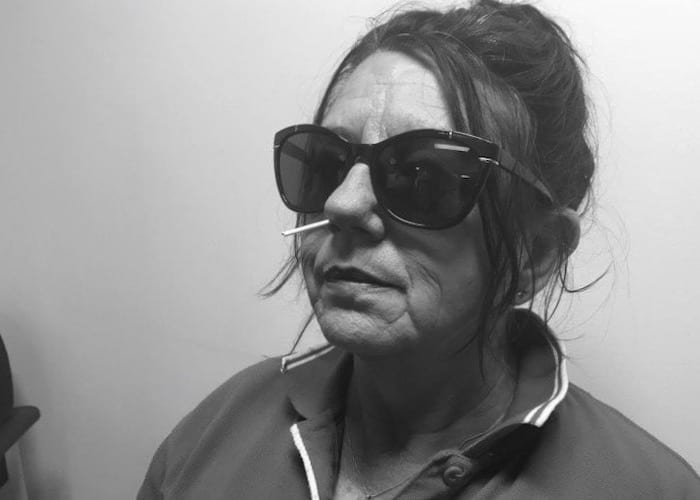Waiting Room Neurology
The Utopian College of Emergency for Medicine (UCEM) is devoted to keeping up with the latest evidence, techniques and iOS updates to ensure that waiting room medicine is at the forefront of critical care applied within the adverse environments of war zones, natural disasters and public hospitals.
In an effort to combat that most pertinacious of symptoms ‘the chronic headache‘ – UCEM have scoured all the available information (i.e. Googled open access resources…), performed a case study (n=1) and present a solution – the intra-Waiting Room Sphenopalatine Ganglion Block (iWR-SPGB). The utility of this new technique was trialled in Dystopian Department X.
Pivotal Observational Study (n=1)
Mrs MS is a 54 year old lady whom has suffered for many years with intractable headaches. Mrs MS is commonly under the care of renowned neurologist and holiday travel writer Dr Charcot-Marie (who interestingly is the progeny of two famous neurologists – the wedding I am told was a veritable who’s who of clinical neuroscience, except for Dr Wernicke who was not invited due to the open bar and well you know…). The patient Mrs MS was unable to see her usual neurologist (as he was having his Tooth extracted) and attended the Dystopian Department X Waiting Room (DDX-WR) with a persistent headache and perturbations.
On arrival Mrs MS had her subjective symptomatology documented (unilateral throbbing headache, 12/10 in severity); iWR neurological examination performed (right arm power 5/5, adyspraxia 5/5 – updated Twatter® status, BookFace® location and SelfieGram® within 72 seconds of WiFi reception) and was offered iWR-led OTC analgesia. Unfortunately given the inexpensiveness; lack of side effects; ease of accessibility and proven efficacy Mrs MS developed an immediate verbally delivered, non-descript equally generic allergy to them. Not having a readily available stock of neurojunketemab at the triage desk (the last in a string of medications Dr Charcot-Marie has trialled to combat these terrible pains) Mrs MS then Snapnattered® her lawyer detailing her poor treatment at the hands of the DDX-WR staff.
Overhearing the dissatisfaction/threat of baseless legal action, and wishing to curtail hours explaining emergency medicine to a clipboard wielding bipedal hominoid, Professor Staghorn jumped into the fray offering the latest, terribly invasive and most difficult to say intervention available; the sphenopalatine ganglion block.
After giving the patient some acetaminophen, a new, potent and highly addictive drug from the USA, the cellulose applicator for the sphenopalatine ganglion block was prepared with 1% lidocaine, another drug from stateside. The applicator was then passed through the anterior nares, superior to the middle turbinate until the tip rested against the posterior nasopharynx wall abutting the sphenopalatine ganglion. The applicator was then left there with approximately 1.2 newtons of force in the cranio-dorsal direction for 11 minutes.
Having had a swab soaked in local anaesthetic shoved up her nose Mrs MS realised her headache was much better and left the waiting room asking on BookFace® where she could get her hands on some of this new wonder drug acetaminophen.UCEM acknowledges the sphenopalatine ganglion block as an intervention that all waiting room specialists should have in their armamentarium as it facilitates good patient flow, incurs a minimum of cost and gives the clinician the satisfaction of shoving something into an orifice.

References
- Trick of the Trade Sphenopalatine Ganglion Block [ALiEM]
- Maizels, M; Scott B; Cohen W; Chen W. Intranasal lidocaine for treatment of migraine: a randomized, double blind, controlled trial. JAMA 1996;27:319-21
- Piagkou, M et al. The pterygopalatine ganglion and its role in various pain syndromes: from anatomy to clinical practice. Pain Pract. 2012;12(5):399-412.
- Jenkin, SB; Tepper, SJ. Neurostimulation for Primary Headache Disorders, Part 1: Pathophysiology and Anatomy, History of Neuromodulation in Headache Treatment, and Review of Peripheral Neuromodulation in Primary Headaches. Headache 2011;51:1254-1266.
- Martelletti, P et al. Neuromodulation of chronic headaches: position statement from the European Headache Federation. J Headache Pain 2013;14(1):86.
- Khan, S; Schoenen, J; Ashina, M. Sphenopalatine ganglion neuromodulation in migraine: What is the rationale? Cephalalgia 2014;34(5:382–391.
- Schoenen, J et al. Stimulation of the sphenopalatine ganglion (SPG) for cluster headache treatment. Pathway CH-1: a randomized, sham-controlled study. Cephalalgia. 2013 Jul;33(10):816-30.
UCEM Core Content
- Utopian College of Emergency for Medicine (UCEM)
- UCEM Publications and Position Statements
- UCEM Mission Statement and Essential Roles and Core Competencies
- About the Utopian College. Including Education; Examinations; and Collegial Hierarchy
- Utopian Medicine General News

Dr Tom Cassidy MBBS FACEM. Emergency physician, Perth Australia. Father of two humans and whimsical lyricist. Special skills: relocating ECGs, reading toxidromes and interpreting dislocations | @tgpcassidy | LinkedIn |
